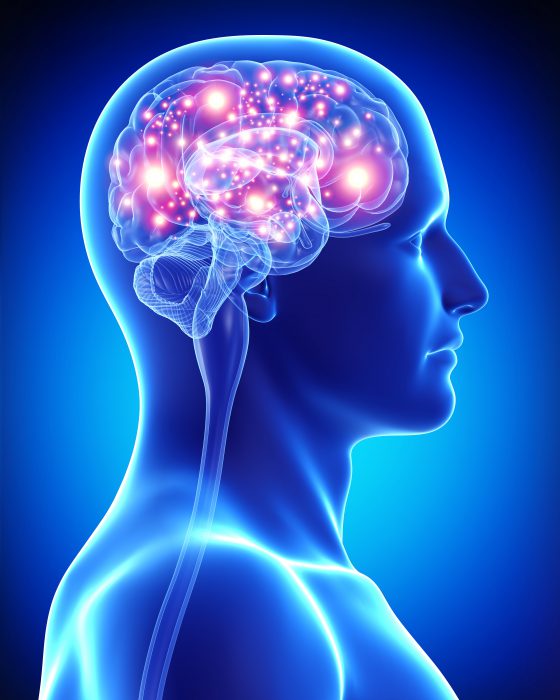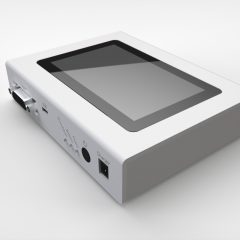
What is Brain Stimulation?
Methods of non-invasive transcranial brain stimulation are becoming increasingly more popular. The most prominent include transcranial electric stimulation (tES) and transcranial magnetic stimulation (TMS). The electric stimulation can employ direct current, alternating current, current impulses and random noise which are commonly abbreviated as tDCS, tACS, tRNS, respectively. This method of stimulation implements a low, almost unnoticeable current which can have a stimulatory or inhibitory effect on a chosen brain area. The current has an effect on the brain thanks to the phenomenon of micropolarization which also affects the neuroplasticity of the brain. In the current research, the neurostimulation is based on complex stimulation protocols as well as synchronization and communication with devices monitoring the patient’s psychophysiological condition. To improve the targeting focus of the electric stimulation, a multi-channel amplifier is used. The amplified method is called HD-tDCS.
The magnetic neurostimulation (TMS) is a method utilizing magnetic impulses which stimulates the neurons. In contrast to the transcranial electric stimulation, the TMS impulse can cause an above-threshold neuron activation (depolarization) in a stimulated part of the brain. The TMS stimulation might be used to stimulate or inhibit the neural activity by using rTMS protocols. Currently, there is ongoing research on the subject of developing new stimulation protocols which use quadripulse stimulation (QPS) and controllable-pulse parameter (cTMS). The TMS allows for very accurate targeting of a given brain area which simplifies the use of neuronavigation.
Areas of application
Psychology, Neuropsychology, Psychiatry, and Cognitive Science:
- Depression treatment
- Experimental therapy
- Cognitive rehabilitation
- Studies on application of neurostimulation in the treatment of mental disorders
- Studies on the effects of neurostimulation integrated with cognitive exercise
Neurology and Physiology:
- Migraine, Parkinson’s disease, dystonia, and tinnitus treatment
- Research on the application of neurostimulation in neurodegenerative diseases
- Research on the application of neurostimulation in the case of brain anomalies and brain damage
Articles
- Risk and safety of repetitive transcranial magnetic stimulation: report and suggested guidelines from the International Workshop on the Safety of Repetitive Transcranial Magnetic Stimulation
- Safety, ethical considerations, and application guidelines for the use of transcranial magnetic stimulation in clinical practice and research
- A comprehensive review of the effects of rTMS on motor cortical excitability and inhibition
- Controllable pulse parameter transcranial magnetic stimulator with enhanced circuit topology and pulse shaping
- Pulse Duration as Well as Current Direction Determines the Specificity of Transcranial Magnetic Stimulation of Motor Cortex during Contraction
- Selective suppression of local interneuron circuits in human motor cortex contributes to movement preparation
- Long-Term Enhancement of Brain Function and Cognition Using Cognitive Training and Brain Stimulation
- Alpha Power Increase After Transcranial Alternating Current Stimulation at Alpha Frequency (α-tACS) Reflects Plastic Changes Rather Than Entrainment
- Eyes wide shut: Transcranial alternating current stimulation drives alpha rhythm in a state dependent manner
- Systematic assessment of duration and intensity of anodal transcranial direct current stimulation on primary motor cortex excitability
- Stimulation of Dorsolateral Prefrontal Cortex Enhances Adaptive Cognitive Control: A High-Definition Transcranial Direct Current Stimulation Study
Producers and products
Neuro Device Group
Neuro Device Group specialise in the development of innovative solutions in the field of therapy, diagnostics, and scientific research of the brain and the central nervous system, providing the world with solutions that change the quality of human life.

nurostym tES
nurostym tES is a complete solution intended for transcranial electrical stimulation. It works in tDCS, tACS and tRNS modes as well as in the direct current pulses.
Read more
